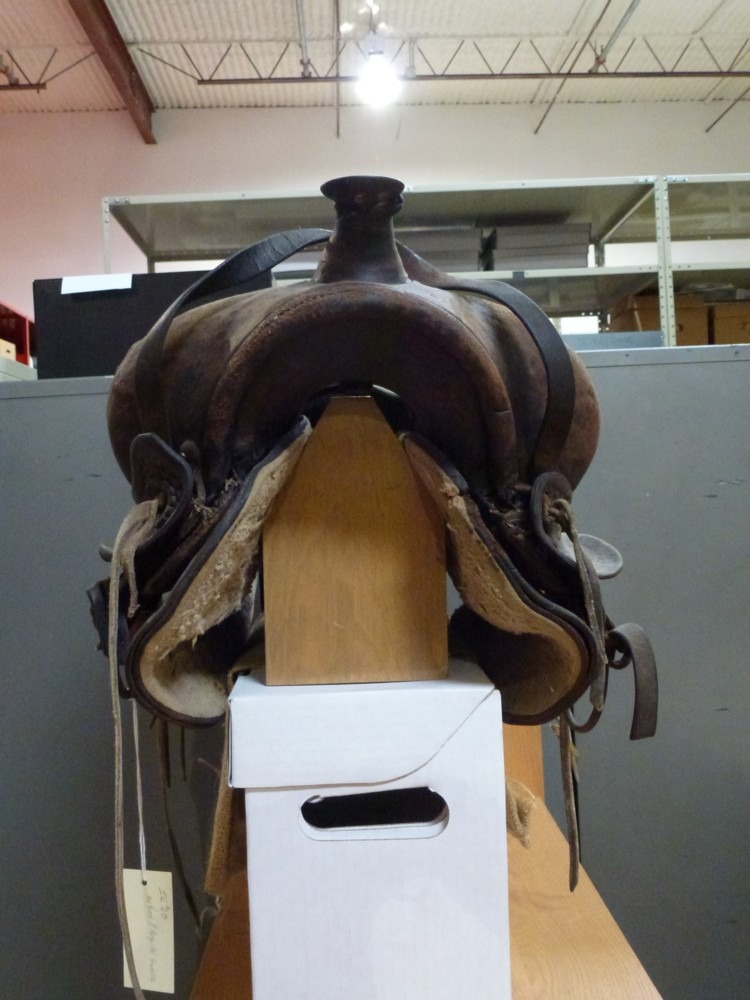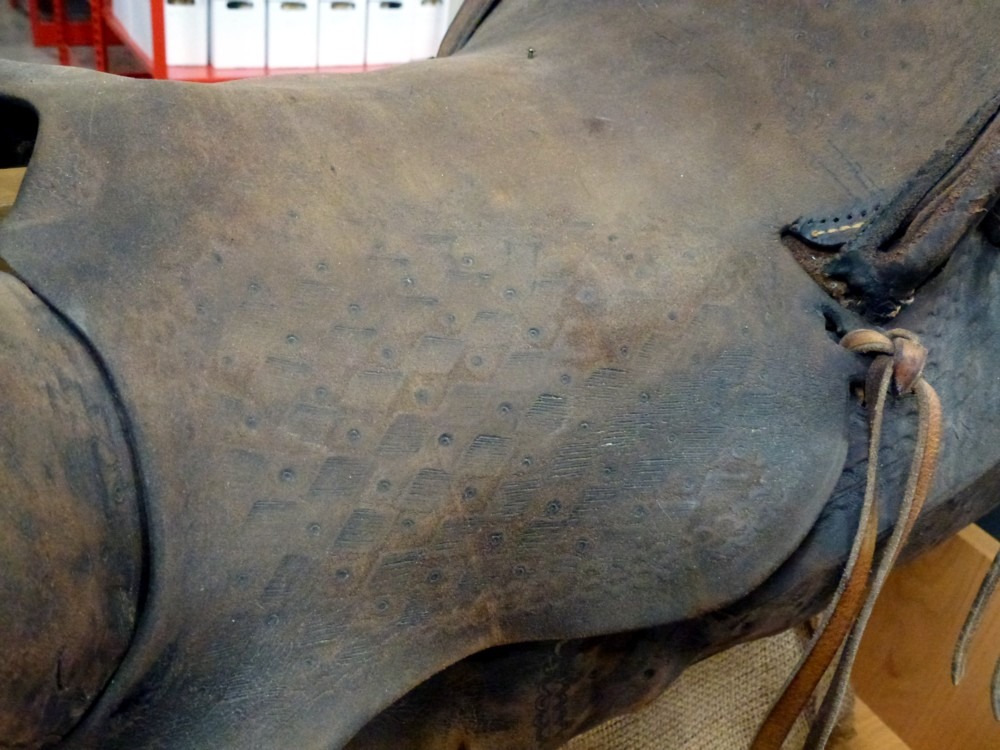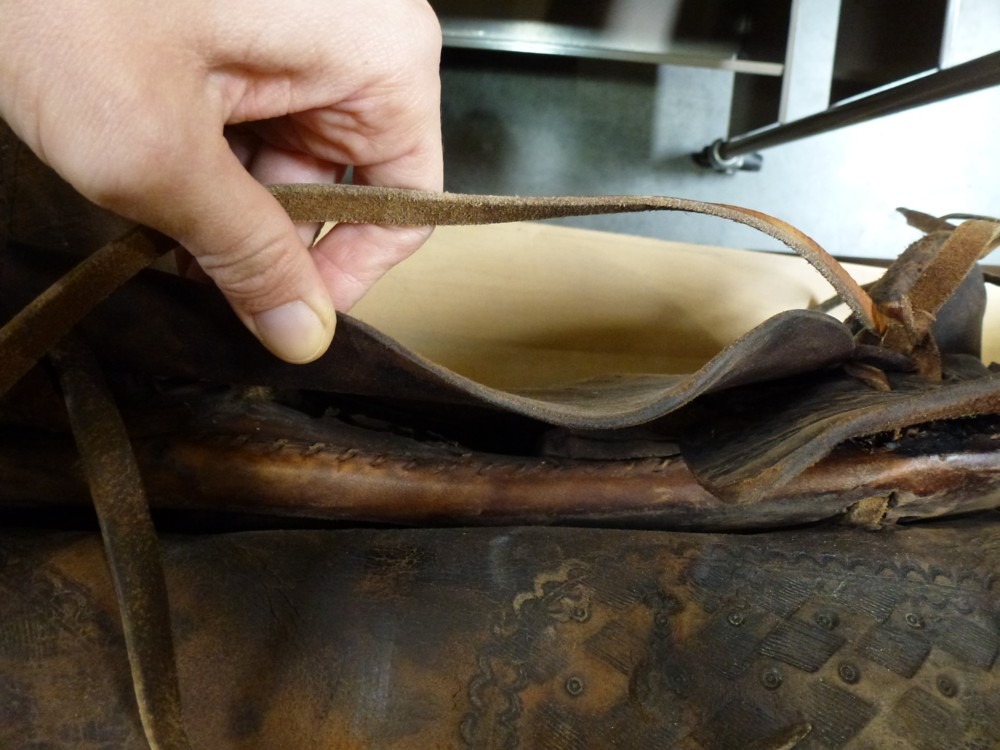by Alethea Drexler, archives assistant
mcgovern@exch.library.tmc.edu
Figuratively, if not literally.
Actually, we do have a saddle here at the McGovern Historical Research Center. It came with the Methodist Hospital collection, although nobody at Methodist could tell Elizabeth White, at the time it was donated, what was significant about it. They simply insisted it went with the collection and that we would have to take it.
We still don’t know what is significant about it. It’s a mystery, Charlie Brown. Visitors always ask about it and we always have to tell them we just don’t know. Nevertheless, let’s take a look.
This is our little Western saddle. To say it has some miles on it would be an understatement:

Western saddles[1] are descended mostly from Mexican cowboy saddles. They are made of leather flaps attached to a wooden frame. This one is missing several pieces, including its stirrups.
I think it must have belonged to a child. First, it has a 14-inch seat[2], which is short for a Western saddle[3] and suggests it was meant for a small person. Second, notice that there is a leather strap attached to the front. This isn’t a standard accessory on a Western saddle and I think it was for a child to hold on. I can’t find any other Western saddles with this on it, but I did find some detachable ones for English saddles[4], which don’t have a horn on the front that a child might hold onto in the absence of a strap.
The long “strings” of leather are decorative, but also serve to hold the layers of leather in place.
I should digress. Before you finish this post, take a minute to look over this diagram[5] of a Western saddle. It will make things easier. The horn[6], unsurprisingly, is the thing sticking out of the front of the saddle (most saddles are unicorns). Horns are actually for wrapping a rope around when roping calves, not for the rider to hold onto; my riding teacher made me ride bareback if she thought I was getting too much in the habit of holding onto the saddle horn.

The fork[6] is the arched piece in the front of the saddle.
This saddle is in pretty rough shape, both because it seems to have been used a lot and because it’s old and hasn’t been maintained in a long time. Interestingly, it still smells like a saddle: Like leather and a bit like sweat. I’m not kidding.
It has a smooth leather seat and the tooling [stamped or carved into the leather] pattern is almost worn off. Somebody rode in this a lot. Maybe generations of somebodies.

Part of the rigging–the straps and rings that hold the saddle onto the horse’s back–is missing, which means we can see the saddle tree:

This one is rawhide over wood[7]. The wooden tree is covered in wet rawhide, which shrinks as it dries and holds the tree together tightly, but not too rigidly. This also works for chair seats: The rawhide seat tightens and holds the wooden chair together.
Saddles are often stamped with a maker’s mark but I couldn’t find one on this; either it doesn’t have one or it’s become illegible with age. Some other antique saddles can be seen here[9]; the Frazier saddle at the bottom of the page is a little like ours, although I have no way of knowing how old ours actually is.
[1] Wikipedia
[2] Horse Saddle Shop
[3] Wikipedia
[4] Horseloverz.com
[5] Western-saddle-guide.com
[6] Western-saddle-guide.com
[7] Western-saddle-guide.com
[8] Horse Saddle Shop
[9] Fort Tumbleweed sales page.